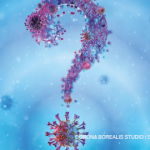 ACR CONVERGENCE 2020—A scientific session on Sunday, Nov. 8, focused on vaccine prospects in COVID-19. Dan Barouch, MD, PhD, director of the Center for Virology and Vaccine Research at Beth Israel Deaconess Medical Center and the William Bosworth Castle Professor of Medicine at Harvard Medical School in Boston, shared his insights about vaccine development across the field, reported on data concerning his lab’s contributions and fielded questions from meeting participants.
ACR CONVERGENCE 2020—A scientific session on Sunday, Nov. 8, focused on vaccine prospects in COVID-19. Dan Barouch, MD, PhD, director of the Center for Virology and Vaccine Research at Beth Israel Deaconess Medical Center and the William Bosworth Castle Professor of Medicine at Harvard Medical School in Boston, shared his insights about vaccine development across the field, reported on data concerning his lab’s contributions and fielded questions from meeting participants.
R&D of the Ad26 Vaccine
Dr. Barouch’s lab began working on a vaccine for SARS-CoV-2 in early January, just after the viral gene sequence was publicly released. From the initial clinical data, the researchers thought it highly likely that an effective vaccine could be feasible. Early reports indicated that most people who get the virus recover and completely clear the virus. Unlike some other viruses, SARS-CoV-2 has limited strain diversity. And prior data already strongly suggested the appropriate antibody target, the COVID-19 spike protein. All these factors made it likely that a successful vaccine could be developed.
At the same time, the team began research to address fundamental questions related to COVID-19 immunology that would prove important for vaccine development for programs worldwide. Was there a natural immunity that would protect individuals who had recovered from COVID-19 if they were re-exposed? Could a vaccine theoretically induce immunity? If so, what were the “correlates of protection,” the specific markers that could be measured to indicate an individual would be protected from the disease if exposed?
Dr. Barouch’s lab helped address these key questions, in work published at the end of May, through an animal model using rhesus macaques. In their first study, they demonstrated proof that natural protective immunity occurred after virus exposure.1
“We think that is very important for the vaccine field, because it is much easier to develop a vaccine for a virus that has natural protective immunity, compared to a virus for which there is no protective immunity,” said Dr. Barouch.
For its second paper, the team developed an early prototype vaccine study, also in macaques. Here they demonstrated for the first time that there was a potential immune correlate; the neutralizing antibody titers introduced by the vaccine inversely correlated with peak viral loads.2 They reasoned that if this correlate was generalizable to humans and to other vaccines, it could be a powerful tool to accelerate vaccine development more broadly.
With industry support from Johnson & Johnson, Dr. Barouch’s lab developed a COVID-19 vaccine based on an adenovector. This deactivated adenovirus can insert DNA from the COVID-19 spike protein into cells, which can then make the protein and provoke an immune response.3 This same vector platform has been used to manufacture candidate vaccines for HIV, Zika virus, Ebola virus, RSV and others. A phase 3 trial of their vaccine (Ad26.COV2.S) is underway, with results expected sometime next year.
Worldwide Vaccine Development
According to the World Health Organization, more than 200 COVID-19 vaccines are currently in development worldwide. Dr. Barouch pointed out that, in the past, successful vaccines have taken several years or more to develop. “The development of a COVID-19 vaccine, or potentially multiple vaccines in approximately one year, would truly be unprecedented,” he said.
In July, an RNA-based vaccine produced by Moderna and the National Institutes of Health became the first COVID-19 vaccine to begin phase 3 clinical trials. A second RNA-based vaccine, developed by Pfizer and BioNTech, followed shortly. Six vaccine programs in the U.S. are currently engaged in phase 3 trials (or are expected to be very shortly), each enrolling 30,000–60,000 participants. These vaccines employ several different strategies, including RNA-based approaches, protein-based approaches, and the adenovirus vector-based approach developed by Dr. Barouch and colleagues. Four to five additional phase 3 trials are taking place internationally.
Developers have used a number of strategies to accelerate the timeline of vaccine development. Many manufacturers have used vaccine platforms that had previously been tested for other pathogens, facilitating both manufacturing and relevant regulatory issues. For example, this applied to the adenovirus vector (Ad26) chosen by Dr. Barouch and colleagues for their vaccine.
As another strategy to speed up vaccine availability, Dr. Barouch noted, “Many of the lead developers are mass producing their vaccines now, as we speak, while their clinical trials are still ongoing, even before they know whether their vaccine is safe and effective in humans.” Prior to this, such an approach would have been unthinkable in terms of financial risk.
Dr. Barouch underscored this manufacturing aspect of the problem. “The timeline to show efficacy in clinical trials is actually not the most relevant timeline in my opinion,” he said. “The most relevant timeline is the one needed to produce and deploy and administer billions of doses of vaccine worldwide.”
Partly because of these manufacturing challenges, Dr. Barouch emphasized the need for multiple lines of vaccine research: “No single vaccine developer can supply a global market of 7 billion people—potentially up to 14 billion doses [if two shots are needed]—so we actually want and need multiple vaccines to be successful. So this is not a race of one company or one group against another group.”
Additionally, not all the developed vaccines will have identical properties. Some may be safer, some more protective or provide longer lasting immunity. Some may be easier to manufacture and more deployable at a practical level. Some require deep freezing for storage, but others do not. And some may be better suited to special populations, such as children or the immunosuppressed. This is another important reason that multiple vaccines be pursued simultaneously.
For example, the Ad26 vaccine currently undergoing phase 3 trials from Dr. Barouch’s group is a single-shot vaccine, the only one currently in that stage of evaluation. Dr. Barouch noted, “A single-shot vaccine is more convenient and deployable and logistically feasible.” He notes that a two-shot vaccine would likely be more immunogenic and provide greater protection, but it would be less convenient to implement. The group also has a two-shot based vaccine that is expected to enter phase 3 trials.
Ongoing Technical Concerns
At the outset of vaccine development, certain technical questions were prominent, and some of these will continue to need to be addressed.
Safety is obviously a key issue during the vaccine development process and beyond. Especially at the outset, researchers had concerns about the theoretical possibility of antibody-dependent disease enhancement, a phenomenon in which previous virus contact (through natural exposure or via a vaccine) might actually worsen disease outcomes. This phenomenon has been observed in some other viruses and in in certain animal models for the related SARS-1 (SARS-CoV) virus.4 However, Dr. Barouch emphasized that such a safety concern has not emerged in animals or humans from any of the SARS-CoV-2 virus literature to date, which has been reassuring to researchers. However, this will need to be borne out through the results of clinical trials.
The durability of the protection acquired by a vaccine will also be a key point of study, as it is for any vaccine. This is currently not known for any of the vaccine candidates.
Additionally, even though the virus is genetically stable compared to some other viruses, mutations may occur, leading to new virus strains. “As vaccines become implemented, there’s a possibility that there could emerge a variance of the virus that could escape the neutralizing antibody responses induced by the vaccine,” said Dr. Barouch. This would necessitate the development of new vaccines for immunological protection.
Dr. Barouch shared some insights specific to patient populations often seen by rheumatologists. He pointed out that although immunosuppressed individuals are not allowed in the current clinical trials, once a correlate of protection is known, researchers could quickly evaluate whether this population could benefit from a vaccine. He clarified that from a theoretical level, safety isn’t the concern for the vaccine his team developed, as it doesn’t use a live viral vector. “The question is whether the immune response will be blunted in people on immunosuppression,” he noted.
The existing COVID-19 vaccine trials have included some people over the age of 65. Although final conclusions cannot be drawn at this time, Dr. Barouch noted that information from initial trials has shown the antibody response in older adults appears similar to that of younger adults, suggesting equal vaccine efficacy.
Vaccine Timeline
Throughout the talk, Dr. Barouch emphasized the need to proceed swiftly with vaccine development, and production must not lead to cutting corners. “We simply cannot compromise patient safety or regulatory integrity of the vaccine, because ultimately a vaccine has to be safe and effective, but it has to be trusted by the public to achieve its goal of widespread use,” he said.
Interim results from the Pfizer trial were released on Nov. 9. These showed no concerning safety signals, with 90% efficacy.5 The results from the Moderna trial are also expected soon, with results from other phase 3 trials to follow. Only then can we begin to compare the potential vaccine candidates in terms of safety, efficacy and other characteristics. Hopefully, these results will yield multiple workable vaccines.
However, it’s impossible to precisely predict when these might be available. “It’s not even clear when the phase 3 trials will end, let alone how quickly a vaccine can be manufactured and distributed,” said Dr. Barouch.
However, Dr. Barouch notes that one or more vaccines might be available under emergency use authorization for certain segments of the population sometime this winter. “In the best case scenario, there could be a roll out of vaccines to the more general population in the spring or summer, but that would really require everything to work perfectly from this point forward,” Dr. Barouch concluded.
Ruth Jessen Hickman, MD, is a graduate of the Indiana University School of Medicine. She is a freelance medical and science writer living in Bloomington, Ind.
References
- Chandrashekar A, Liu J, Martinot AJ, et al. SARS-CoV-2 infection protects against rechallenge in rhesus macaques. Science. 2020 Aug 14;369(6505):812–817.
- Yu J, Tostanoski LH, Peter L, et al. DNA vaccine protection against SARS-CoV-2 in rhesus macaques. Science. 2020 Aug 14;369(6505):806–811.
- Mercado NB, Zahn R, Wegmann F, et al. Single-shot Ad26 vaccine protects against SARS-CoV-2 in rhesus macaques. Nature. 2020 Oct;586(7830):583–588.
- Luo F, Liao FL, Wang H, et al. Evaluation of antibody-dependent enhancement of SARS-CoV infection in rhesus macaques immunized with an inactivated SARS-CoV vaccine. Virol Sin. 2018 Apr;33(2):201–204.
- Pfizer Inc. News release: Pfizer and BioNTech announce vaccine candidate against COVID-19 achieved success in first interim analysis from phase 3 study. Business Wire. 2020 Nov 9.



